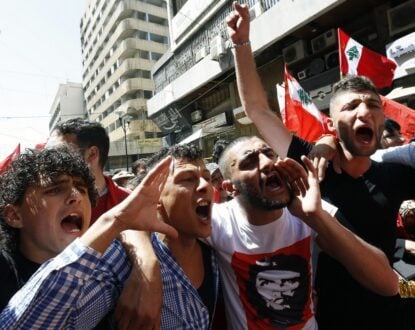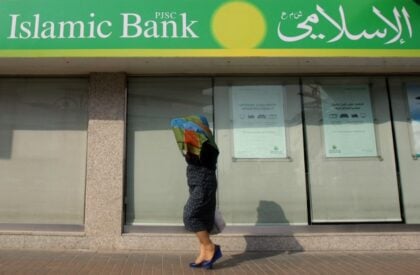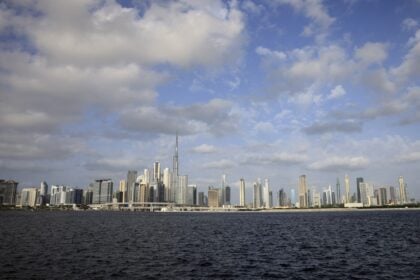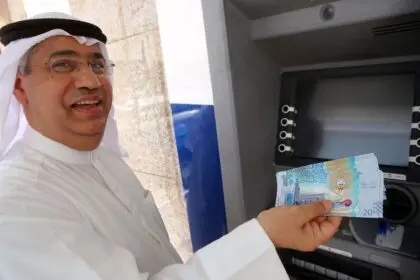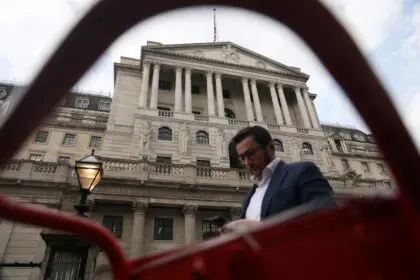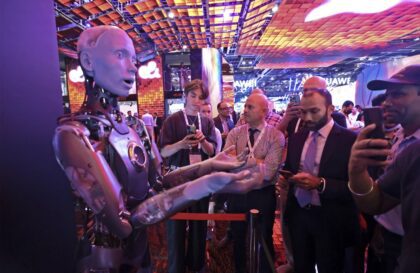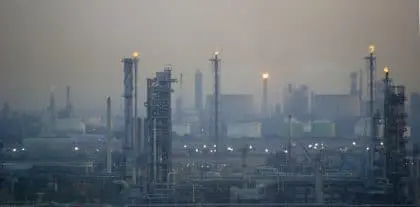
Introduction
The economy of Kuwait registered an actual contraction rate of 9.9% during 2020, and a drop of 10.33% compared to its last economic growth rate before the Covid-19 Pandemic of 0.43% from 2019. According to a World Bank report released in early April 2021, the proportion of Kuwaiti public debt in 2019 reached 20.3% of GDP, rising to 22.5% in 2020, while inflation in 2019 was 1.1% to 0.9% in 2020.
The World Bank considered the proportion of Kuwaiti public debt recorded in 2019 and 2020 to be the lowest compared to other GCC countries, with higher levels in 2020, such as the United Arab Emirates with 25%, Saudi Arabia with 32.8%, Qatar with 64.1%, Oman with 81.2% and Bahrain with 132.4%.
Kuwait has a small but relatively prosperous and open geographical economy; Crude oil reserves are about 102 billion barrels, more than 6% of global reserves. The World Bank expected that the economy of Kuwait would witness steady growth in the following years in light of:
– the return of the favorable conditions for economic growth to normal,
– the implementation of public financial control measures to reduce the deficit,
– the financial and economic reform measures expected to be implemented gradually based on the “ New Kuwait Vision 2035, ” which aims to transform the State of Kuwait into a regional and global financial and commercial center that attracts investment,
– the expected rise in output in the non-oil sectors due to diversification of the economy,
– the increases in oil production in the future in line with the state’s obligations under the “OPEC +” agreement.
– improving the work environment and diversifying the economy.
The World Bank also considers that other key factors are expected to positively influence the economic recovery process, including:
– the relative recovery of economic activity in advanced and rising market economies,
– the recovery of international trade in goods
– the relative improvement in oil prices as a result of improved levels of world demand.
On the other hand, the World Bank stressed the importance of the continued stimulus of the Kuwaiti government to support economic recovery. The Law on the postponement of loan premiums and addressing the effects and consequences of the Covid-19 epidemic was passed in March of 2021.
The payment of the financial obligations owed by citizens to many government agencies was deferred. (The Fund for the Treatment of the Situation of Troubled Citizens, the Family Support Fund, the State Social Insurance Institute, the Credit Bank, and the State Residential Welfare Institute) Payment of consumer loans in local banks, investment companies, and finance companies controlled by the Central Bank were also deferred to eligible citizens. The delay was set at six months, renewable for one time, the cost of which would be borne by the Government.
The Act to support and ensure the financing of local banks to customers affected by the corona pandemic was also adopted as a means of motivating banks to provide financing to owners of small, medium, and micro enterprises affected by the disruption of economic activities and to provide the necessary liquidity to customers affected by the continuation and non-cessation of their activities. The Act also aims to strengthen the capacity of local banks to play their central role in supporting economic activity.
According to the World Bank ( Arab Economic Outlook ), the most significant challenge to the economic recovery of the State of Kuwait in the wake of the significant decline in GDP in 2020 is the high degree of uncertainty surrounding the economic prospects, especially in the event of a rise in new infections and mutated strains of COVD-19.
The regular and adequate access to a continuously made vaccine supply also poses a potential recovery challenge for the Kuwaiti economy. Global demand for large oil stocks also remains a source of weakening growth prospects in oil-exporting countries, including Kuwait. The extended economic impact of the pandemic on growth, employment, and incomes is also a potential threat to growth prospects. The pace of economic reforms and the rapid completion of relevant legal legislation remains an essential factor in the recovery of the Kuwaiti economy.
Gross Domestic Product
GDP ($1 = 0.303DK):
The Covid-19 pandemic has affected the Kuwaiti economy. Its repercussions on the global and regional economy have resulted in many countries entering prolonged periods of economic recession. This has led to a decline in world demand for oil and a collapse in oil prices; According to the 2020 financial report of the Central Bank of Kuwait, it is reflected directly or indirectly in Kuwait’s economic activity.
Kuwait’s gross domestic product (GDP) was estimated to have contracted at constant prices by 9.9% in 2020, compared to a growth rate of about 0.4% in 2019. This contraction resulted from a decline in the value-added in fixed prices for all non-oil sectors by 10.5% during the year in question, after a growth rate of 3.0% in 2019. and a 9.4% decline in fixed value-added for total oil sectors during 2020.
On the other hand, the current price added value of all non-oil sectors declined to approximately KWD 20.756 billion (USD 68.502 billion) in 2020 and a decrease of 7.9% compared to 2019. Total oil sectors’ current price added value declined by 42.0% to approximately KWD 10.637 billion (USD 35.106 billion).
As a result, the value of GDP at current prices fell by 23.2% to about 31.393 billion dinars (103.607 billion dollars) during 2020.
This decline was driven mainly by the decrease in the average price per barrel of Kuwait’s exported crude oil to about US $41.5 per barrel during 2020, down 35.2%. In addition, the inflation rate measured by the consumer price index in Kuwait rose to about 2.1% in 2020, from about 1.1% in 2019, and the total population in Kuwait declined by 2.2% at the end of 2020, compared to 3.3% at the end of 2019.
| Indicators | measuring unit | 2016 | 2017 | Change ± |
| GDP (at constant 2010) | Billion US$ | 142.857 | 138.762 | -4.095 |
| GDP growth (annual) | % | 3.5 | -2.9 | - |
| GDP per capita (constant 2010) | US$ | 35,250.9 | 33,545,6 | -1705.3 |
| GDP (at current value) | Billion US$ | 110.912 | 120.126 | 9.214 |
Source: World Bank.
Foreign Trade
Foreign trade ($1 = 0.303DK):
The negative effects and economic repercussions of the Covid-19 pandemic have contributed to developments in the external sector of Kuwait in 2020, reflecting the overall transactions between the domestic and global economies and developments in those economies during the year.
Most economic sectors have been directly and indirectly disrupted by the spread of the pandemic, causing many negative repercussions on national economies, especially those with a high degree of openness to and increased dependence on the outside world for import and export.
The effects of the pandemic (Covid-19) on the balance of payments, especially the trade balance of Kuwait, varied during the aforementioned year. Due to the economic recession in many countries of the world, oil exports (which constitute the majority of commodity exports) have been affected by:
- declining world oil prices,
- the decreases in global oil demand, the general impact of international trade on the closure of many countries,
- the suspension of many global shipping companies as preventive measures,
- and the disruption of global supply chains.
The surplus trade balance declined significantly during the first three quarters of 2020 due to the depreciation of commodity exports. According to the Central Bank of Kuwait, available data and estimates indicate that the total value of the foreign commodity trade of the State of Kuwait, both export and import, decreased during the first three quarters of 2020 compared with the corresponding period of 2019, to a total of approximately 14.640 billion dinars ($48.317 billion).
This represents a decrease of approximately 6,996 billion dinars ($23,086 billion) and 32.3%.
The value of the surplus in the commodity (trade) balance expressed in the computational difference between the value of exports and imports of goods during the said period also declined to 3.667 billion dinars ($12.102 billion), compared to about 8.323 billion dinars ($27.689 billion) for the corresponding period of 2019, representing a decrease of about 4.656 billion dinars ($15.366 Billion).
(a) commodity exports
The value of commodity exports declined due to the decline in oil exports and world oil prices. The total value of commodity exports to Kuwait during the first three quarters of 2020 was 9.135 billion dinars (30.149 billion dollars), compared to 14.979 billion dinars (49.436 billion dollars) during 2019.
The decline of some 38.9%, mainly to reflect the depreciation of oil exports from the indicated period of 2020 to some 8.164 billion dinars ($26.944 billion), compared to 13.544 billion dinars ($44.700 billion) during the corresponding period of 2019, representing 39.7%, according to data from the Central Bank of Kuwait.
In the same direction, the value of non-oil exports to Kuwait declined to 988.9 million dinars ($3.264 billion) during the corresponding period of 2019, representing a decrease of 31.1%.
With regard to the relative distribution of the value of non-oil exports by major trading partners, the value of non-oil exports to the ten most important States amounted to 783.5 million dinars. $2.586 billion during the first three quarters of 2020, representing about 79.2% of the total value of non-oil exports to the State of Kuwait during the period referred to, compared with approximately 1.119 billion dinars. ($3.693 billion), representing about 78% during the corresponding period in 2019.
Saudi Arabia ranked among the top 14.8% of the total non-oil export markets in Kuwait during the first three quarters of 2020, compared with 10.2% in the corresponding period in 2019. The people’s republic of China ranked second with 13.6%, India and the United Arab Emirates third with 12.2%.
(b) commodity imports
The total value of commodity imports to Kuwait during the first three quarters of 2020 was approximately 6.177 billion dinars ($20.386 billion), compared with some 7.601 billion dinars ($25.086 billion) during the corresponding period of 2019, a decrease of 18.7%.
With regard to the relative distribution of the total value of commodity imports by trading partners, the data indicates that the value of commodity imports from the ten most important countries relative to importation amounted to approximately 3.961 billion dinars ($13.073 billion) during the period referred to in 2020, representing about 64.1% of the total value of commodity imports by the State of Kuwait during that period.
This is compared to 5.083 billion dinars ($16.776 billion), representing about 66.9% of total imports during the corresponding period of 2019.
During the aforementioned period of 2020, the People’s republic of China ranked among the first import markets of Kuwait, at a value of approximately 1.084 billion dinars ($3.578 billion), representing about 17.6% of the total value of Kuwait’s imports from the world. The United Arab Emirates was third with a rate of 8.7% of commodity imports in Kuwait during 2020.
Oil sectors
Oil sectors ($1 = 0.303DK):
Value added in constant prices in total oil sectors (Crude oil and natural gas extraction, services activities related to crude oil extraction, and gas excluding survey services) saw a decrease in 2020 of 1.969 billion Kuwaiti dinars (US $6.498 billion), to 18.915 billion dinars ($62.426 billion) After a decline of 370.4 million dinars ($1.222 billion), and 1.7% during 2019.
This decline in 2020 is the result of a drop in the value-added of the crude oil and natural gas extraction sector to some 18.798 billion dinars ($62.040 billion) in 2020, compared to some 20.767 billion dinars (68.538 billion dollars) in 2019, a decline of about 1.969 billion dinars ($6.498 billion).
On the other hand, according to the Annual Economic Report of the Central Bank of Kuwait, the value-added in current prices of the entire oil sector was seen, (Crude oil and natural gas extraction, services activities related to crude oil and gas extraction excluding survey services). There was a relative decrease of 42% in 2020 to 10.637 billion dinars ($35.106 billion), after a decline of about 1.769 billion dinars ($5.838 billion) and 8.9% during 2019.
The decline during 2020 comes from the decrease in the added value of the crude oil and natural gas extraction sector, reaching about 10,506 billion dinars ($34,673 billion) during 2020, compared to about 18.216 billion dinars ($60.119 billion) during the year 2019. That is a decrease of 42.3%. The data of the Organization of Petroleum Exporting Countries “OPEC” indicate a reduction in the average spot price of the standard “OPEC” basket of oils, to reach about $41.47 per barrel as an average for the year 2020 compared to about $64.04 per barrel as an average for 2019.
These numbers represent a decrease of 35.2%. In parallel, the average price of a barrel of Kuwaiti export crude oil during 2020 decreased to about $41.5 per barrel, compared to about $64 per barrel on average during 2019, with a value of $22.5, a decrease of 22.5%.
Similarly, Kuwaiti crude oil production rates declined from an average of 2.677 million barrels per day during 2019 to 2.439 million barrels per day for 2020, a decrease of 8.9%. In the same context, production of refined petroleum products declined from an average of about 716.9 barrels per day during 2019 to an average of 622.9 barrels per day during 2020, representing a decrease of 94 barrels per day (13.1%).
The amount of liquefied natural gas production fell from 193,000 barrels per day during 2019 to 177,000 barrels per day during 2020, a decrease of 15.3 thousand barrels per day (7.9%).
Non-Oil Sectors
Non-oil Sectors ($1 = 0.303DK):
The value-added in fixed prices in the total non-oil sector has shrunk in 2020, worth about 1.950 billion dinars ($6.436 billion), at a rate of 10.5% to 16.597 billion dinars ($54.776 billion), compared to a growth of 538.3 million ($1.777 billion) and an average of 3% during 2019.
According to the data, the value-added in fixed prices for real estate, rental, and commercial activities (representing 21.8% of non-oil domestic product) has declined by 308.3 million dinars ($1.017 billion), or 7.8%, to 3.621 billion dinars ($11.950 billion) during 2020; against a growth of 247.3 million dinars ($817.2 million) and an average of 6.7% during 2019.
The value-added at constant prices for electricity, gas, and water (representing 9.4% of non-oil domestic product) was 1.555 billion dinars (5.132 billion dollars) during 2020; Against 1.352 billion dinars ($4.462 billion) during 2019, a growth rate of 15%. While restaurant and hotel activity (accounting for about 1.4% of non-oil domestic product) declined by 95.2 million dinars ($314.2 million) and 28.8% to 235.8 million dinars ($778.2 million) during 2020; growth of 13.7 million dinars ($45.2 million), and 4.3% during 2019.
The community, social and personal services activity (accounting for about 47.3% of non-oil domestic product) has maintained its lead among the activities that make up the non-oil sectors in terms of its contribution to non-oil domestic product. It grew in value added by 213.1 million dinars ($703.3 million) and by 2.8% to 7.851 billion dinars ($25.911 billion) in 2020, compared to 7.638 billion dinars ($25.208 billion) in 2019.
Agriculture and Fishing

Agriculture went through stages of neglect after the discovery of oil, leading to a boom in agriculture. In the 1950s agriculture was confined to the government sector and only in beautification and afforestation, rather than schools, facilities, parks, and streets where it was needed. By the end of the 1960s and early 1970s, there had been a growing interest in production agriculture, and the private sector had begun to establish farms in the area of Bavra and Abdali.
There is considerable interest in agriculture by the Government in developing and supporting Kuwaiti agricultural products; The government has launched a special campaign to help Kuwaiti products under the banner “In Kuwait,” as well as increasing the capital the State grants to farmers, to “change the image of Kuwait” as a consumer country that, according to Kuwaiti researchers, is not suitable for agriculture and production.
Although the country’s agricultural sector is a novelty, it contributes positively to food security in Kuwait, producing many varieties of vegetables that fill much of the need of the local market, especially tomatoes that are sufficient for the State from mid-February to late May, as well as most paper and root vegetables and other types of vegetables exceeding 40 varieties.
Despite the climate in Kuwait, the authorities, as part of the diversification of their economy, have injected millions of dollars to encourage investment in the agricultural sector during the first half of the current decade. Kuwait produces approximately 400 tons of plants, vegetables, trees, and products every day.
Farm owners receive annual support from the Kuwaiti State of approximately $25 million and sell their daily crops through bulk tenders dealing for about 100 thousand dinars, or $330 thousand.
Fish Farming
Water farming has become well established in Kuwait, especially concerning the integration of tilting with crops and the cultivation of marine fish in existing cages. Both systems proved to be economically viable, although the loss of fish in cells from 1999-2001 caused a severe decline. The production of indigo Balti increased from 110 tons in 2000 to 275 tons in 2004. The production of Denis fluctuates continuously, reaching a maximum of 426 tons in 2002, and then declined dramatically to only 3.8 tons in 2004.
The “Gulf International Aquaculture Company” was established in 2003. This company produces commercial fish fry, mainly bream and, to a lesser extent, bream. The company also imports fertilized bream eggs, from France mainly.
Statistics show that the production of fish and shrimp in the State of Kuwait in 2005-2016 ranged from 4,000 to 6,000 tons per year, of which 5-10% was fish farming, with production fluctuating between 300 and 600 tons, according to the State Authority for Agriculture and Fisheries Affairs.
For the 2018/2019 season, the General Authority for Agriculture issued a statistical report confirming that the fisheries sector cultivated sapphires, bales, hamlets, and shellfish in a quantity of about 655 tons, with a total production of 1,960 tons, with a market value of 352,000 dinars, in 2018, while in 2019 it produced 458,146 tons. ($2.795 million), a rise of nearly 50% in production and value, compared to the previous season.
The World Bank estimates that in 2019, 1.78% of all workers in the state were employed, compared to 1.93%, and 1.86% in 2017 and 2018, respectively. The value-added in the agricultural sector (in constant United States dollar prices in 2015) is estimated at $637.57 million in 2019, compared with $655.15 million in the previous year.
International Market Position
Kuwait was ranked 52nd in the Global Competitiveness Index 2017-2018, down 14 places from 2016-2017. The country is suffering from a deteriorating macroeconomic environment due to low oil and gas prices. The fiscal deficit balance in 2016 turned from a 1.2 per cent surplus of GDP to a deficit of 3.6 per cent of GDP, with an increase in debt.
To meet the challenges posed by continued low oil prices, according to the World Bank, Kuwait will have to increase its capacity to innovate by investing in higher education and training and promoting a more inclusive and effective labour market that will enable it to make better use of its human capital.
According to the World Economic Forum, Kuwait has not improved significantly in most of these dimensions over the past decade, and in many cases, the situation has worsened. In particular, the efficiency of the labour market has fallen by more than one point, making it one of the most backward areas of advanced economies, along with innovation, higher education, training and technological readiness.
Infrastructure

The total length of Kuwait’s road network has been estimated at almost 6,000 kilometres in 2006. That year, 975,000 private automobiles were registered, an increase of almost 30 percent in just four years. The 3,000 buses of the state-owned Kuwait Public Transport Company (KPTC) provide domestic services as well as regular services to Mecca, in Saudi Arabia.
In addition, 18,000 private buses, 184,000 trucks, and 9,200 taxis facilitate the mobility of the nation’s inhabitants. In 2007, almost 7 million passengers used Kuwait International Airport, up from 4.3 million in 2003. The national airport is currently being expanded and modernized. It is designed to accommodate 20 million passengers per year in the near future and 50 million passengers at a later stage.
Kuwait’s largest commercial seaport is Port al-Shuwaikh, west of Kuwait City. The second largest commercial port is located near the Shuaiba Industrial Area, 56 kilometres south of Kuwait City. Here, the Gulf is much deeper, allowing larger vessels to moor.
It is for just this reason that the oil terminals of Mina al-Ahmadi and Mina Abdullah are also located along this short stretch of coast. The Kuwait Ports Authority is directed by a member of the ruling Al Sabah, a sure indication of the prime importance of these ports in the country’s economy. Nevertheless, plans for their privatization are being discussed.
Energy
For an in-depth overview of Kuwait’s energy sector click on the button below.
Banking and Finance
The finance, real estate, and business services sector is the second contributor to the nations’ GDP, after oil (17 percent in 2007). The global financial crisis hit Kuwait late but hard. Local money supply and credit conditions deteriorated rapidly in the final months of 2008, and the money market remained tight through 2009.
The Kuwait Stock Exchange (KSE) plummeted 45 percent in autumn 2008. Local investment companies recorded a combined loss of more than USD 32 billion, and two of them collapsed. The Kuwaiti government reacted with an emergency financial-stability law, which provided a safety net for struggling banks, in return for stricter risk-management regulation.
All local bank deposits were guaranteed by the state, and a USD 5.4 billion emergency investment fund was established to shore up the ailing stock market. Some local investment firms have been partly bailed out by the government. The KSE rebounded partially in the second quarter of 2008, with a 182 percent increase in traded shares. The local real-estate market, which was especially hard-hit by the sudden financial contraction, also appeared to recover.
Consumer debt stood at an estimated USD 25 billion in late 2009. Kuwaiti citizens expect the government to bail them out of financial difficulties, as it has often done in the past. The state appears to be able to afford this in the short term. Due to lower spending and recovering oil prices, the state continued to run a billion-dollar budget surplus in 2012, but the nation’s long-term investment portfolios have suffered.
This is partly because the state drew from these funds to finance its economic stimulus and safety packages, such as the stock-market investment fund, and partly because of losses in overseas investments, particularly in American banks. The Kuwait Investment Authority, which manages the emirate’s sovereign-wealth funds, is said to have lost USD 31 billion in the second half of 2008.
This amounts to roughly 15 percent of its estimated total investments portfolio. The state has also dug deep into its foreign-exchange reserves, which were estimated at USD 17 billion in 2008.
Tourism
Like all smaller Gulf Cooperation Council states, Kuwait considers the development of a local tourist industry an important part of its economic diversification package. Most investment money has gone into increasing hotel capacity. The number of guests visiting Kuwait has increased spectacularly, from 90,000 (280,000 nights) in 2004 to 292,000 (408,000 nights) in 2007. In 2004, most foreign visitors came from Saudi Arabia (896,000, or 30 percent).
Since their number greatly outweighed the number of hotel guests, these were almost exclusively day-trippers. They certainly did not come to admire the country’s museums; the number of museum visitors in Kuwait decreased from 64,000 in 2004 to 33,000 in 2006. The hotel and restaurant sector contributed only 0.6 percent to GDP in 2007. Because of Kuwait’s ban on alcohol consumption, the country is less competitive than the UAE in the market for European tourists.
Labour Market
According to the CIA World Factbook, Kuwait’s labour force totalled 2.24 million in 2011. The Public Authority for Civil Information (PACI) estimated that Kuwait’s labour force totalled 2.09 million in December 2007 (61 percent of the total population). Only 15 percent of the labour force consisted of nationals (324,300), down from 17.4 percent (341,200) in 2006.
75.4 percent of the foreign population were registered as economically active, compared with just 30.8 percent of the national population. The latter low figure is not the result of the absence of local women in the labour market – the share of females in the local labour force grew from 41.7 percent in December 2006 to 43.7 percent at the end of 2007. The foreign labour force is overwhelmingly male (about 80 percent).
The large majority of nationals work in public administration (78.8 percent). At the end of 2007 just 2 percent were employed in the private sector, which was still a marked increase of 15.7 percent over December 2006. As of December 2008, 16,641 citizens (4.9 percent of the national workforce) were registered as unemployed.
Workers’ unions
In principle, both citizen and non-citizen workers can establish and join labour unions in Kuwait, although the latter can do so only after five years of residence and only as non-voting members. There are many restrictions: strikes are allowed only after government approval and compulsory external arbitration of the dispute; union financing depends on state subsidies, and no more than one union may be established in any occupational trade. Only 3 percent of the Kuwaiti workforce is unionized.
Basic Indicators
| Indicators | 2019/2020 | 2020/2021 |
| Fiscal year | April – 31 March 1 | April – 31 March 1 |
| Total Public Revenue (Billion Dollars) | 52.18 | 24.76 |
| Total Public Expenditure (Billion Dollars) | 74.26 | 71.14 |
| Public budget deficit (billion dollars) | 22.08 | 46.38 |
| Gregorian Year | 2019 | 2020 |
| Public Debt to GDP Ratio (%) | 20.3 | 22.5 |
| Inflation rate (%) | 1.1 | 0.9 |
| US Dollar (Kuwaiti Dinar) exchange rate | 0.303 | 0.303 |
| Unemployment rate (%) | 2.2 | 2.3 |
Latest Articles
Below are the latest articles by acclaimed journalists and academics concerning the topic ‘Economy’ and ‘Kuwait’. These articles are posted in this country file or elsewhere on our website:




